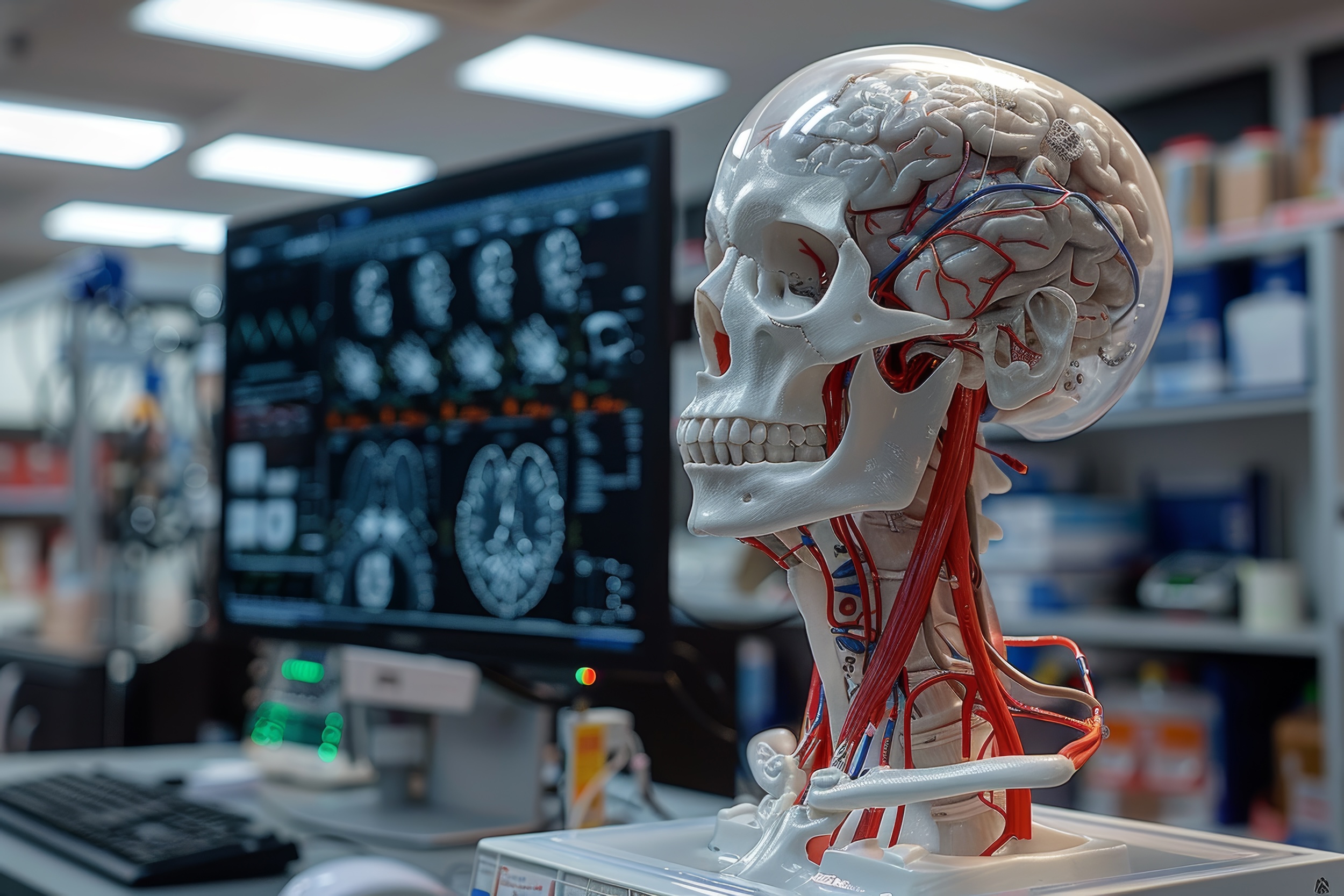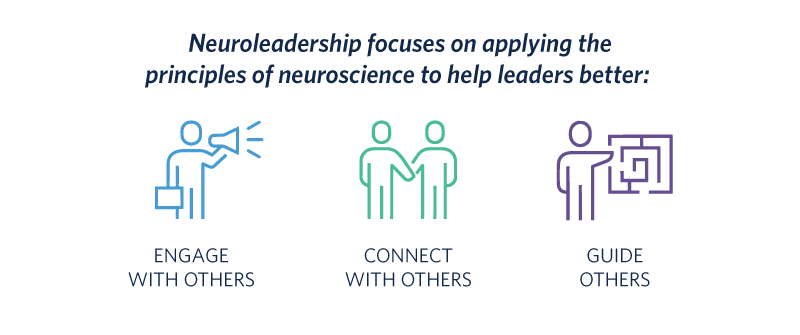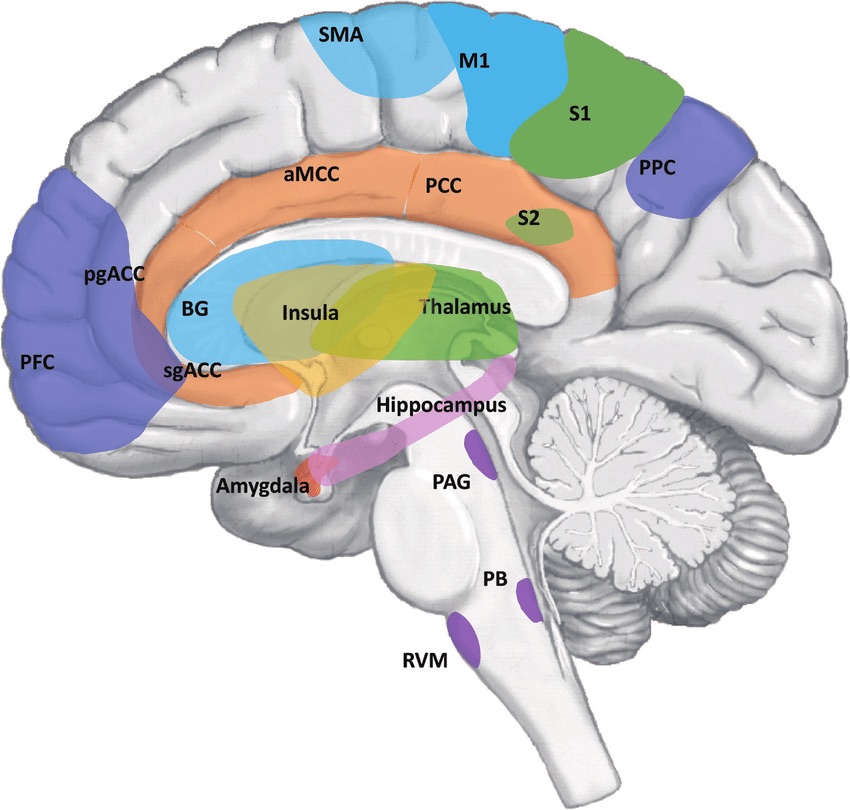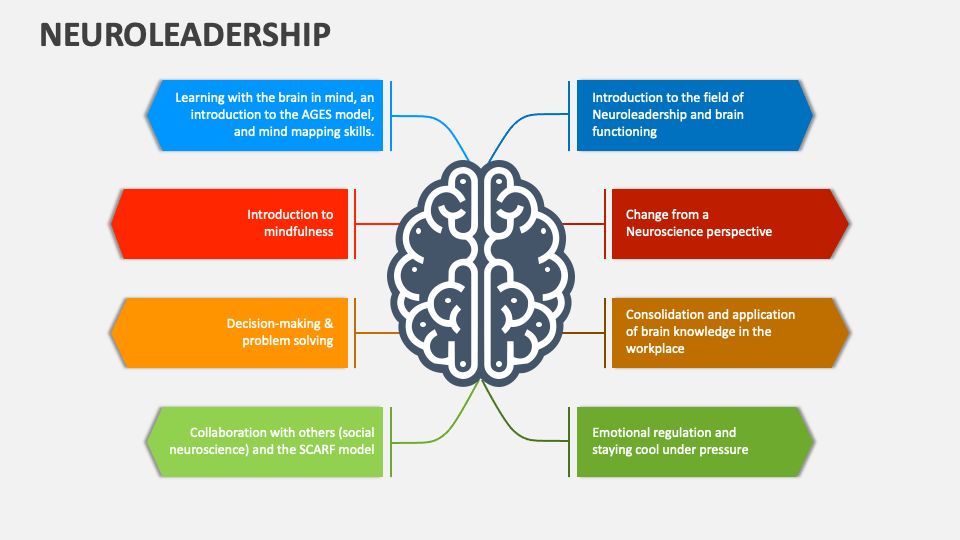In the post-pandemic era, leaders must foster happier, more productive workplaces. This puts a renewed emphasis on the management of emotions and cognitive processes. As a result, neuroleadership has emerged as a transformative approach in business management. In this article we cover what neuroleadership is, why it matters, some of the basic principles of neuroscience, and how to implement actionable neuroscience-based techniques in the workplace.
What is Neuroleadership?
Neuroleadership is the fusion of neuroscience and effective leadership, revealing how brain function influences decision-making. By applying insights from neuroscience, leaders can make competent choices that help their teams overcome challenges and achieve success. Neuroleadership when used effectively is like a kaleidoscope, where each adjustment brings clarity and coherence to the complex patterns of the brain and leadership.
On a fundamental level, the aim of neuroleadership is to intertwine the knowledge of neuroscience with everyday leadership practices. The marriage of these credos provides a spectrum of solutions that align with innate brain functionality, allowing leaders to react thoughtfully instead of merely instinctively.
Image Source: UNC Kenan-Flagler
The Foundation of Neuroleadership
What underlies the concept when discussing brain-powered leadership techniques? It isn’t rocket science, but it comes close. Often, leaders are caught in the tide of hurried decision-making—here is where understanding the brain’s mechanisms aids in maneuvering through these situations. By harnessing cognitive strategies like the emotional guidance scale, mental agility, and stress hardiness, leaders can forge a professional environment around them that flourishes.
The Neuroanatomy of Emotions
Understanding the neuroanatomy of emotions allows leaders to take the first step to creating a resilient workplace. We encourage you to learn how this first works within your own brain and then share that understanding with your team. Keep in mind that while the basic functionality of each persons’ brain is biologically the same, how it manifests in connections, ideas, or actions is vastly different from person to person.
To simplify the conversation as much as possible, psychologist Paul Ekman identified six basic emotions in the 1970s, but other contemporary scientists argue there could be as few as four or as many as twenty-seven. The debate extends to whether emotions are universal and innate or learned through experience. What we know for certain is that emotions are linked biologically to brain regions like the amygdala, insula, and periaqueductal gray, which manage responses such as fear, disgust, pain perception, and social behaviors.
Amygdala
Located deep within the brain, the amygdala is an almond-shaped structure that plays a key role in processing emotions, emotional responses, and motivation. It evaluates fear, differentiates between threats and safety, recognizes social incentives, and guides ways to achieve them. Additionally, the amygdala takes part in classical conditioning, a learning process introduced by Ivan Pavlov through his dog digestion experiments. Pavlov’s dogs produced saliva when food was brought by a lab technician, eventually salivating simply at the sight of the technician, regardless of whether food was present.
Insula
The insula is a thin, ribbon-like structure of gray matter located deep within the cerebral cortex. This prune-sized patch of rolled tissue triggers feelings of disgust, possibly as a defense against consuming harmful substances. MRI studies show the insula activates in response to actual or expected pain. It is believed that the insula assesses the body’s condition and connects physical states, emotions, and conscious decisions.
Periaqueductal Gray
The periaqueductal gray (PAG) is situated in the brainstem and plays a role in how we perceive pain. It has receptors that respond to the activity of pain-transmitting nerves from all over the body—this could explain why diverting our attention away from an injury sometimes lessens pain sensation from the injury itself. Beyond pain modulation, the periaqueductal gray is associated with defensive behaviors, bonding, and anxiety responses.
Regardless of where certain emotions come from within the brain, suffice it to say that all these regions work together and respond to one another, culminating in the complex and nuanced experiences we all process in the form of emotions. What’s key as a leader is to remember that each person you work with is navigating this complexity internally daily. This is why modern leadership calls for a great amount of empathy, patience, and tolerance of the full range of human experience.
Neural Strategies for Conflict Resolution
As we look outward from the individual’s emotional network within the brain to analyze how those networks interact with each other in the form of relationships, the complexity increases exponentially. Because of this, conflict is almost unavoidable. So how do leaders even begin to sift through managing these relationships, while building team unity, and achieving important business outcomes?
Managing disagreements with a brain-conscious approach is much more than just resolving conflicts; it is about comprehending the neurological foundation of conflict to prevent its emergence in the first place. Here are a few tips on how you can effectively resolve conflict while working with your brains’ natural functioning (and the brains of those around you).
- Harness Empathy Through Mirror Neurons: Actively engage your brain’s mirror neurons by consciously putting yourself in the other person’s shoes during a conflict. This empathetic approach helps you understand their perspective, fostering mutual respect and paving the way for constructive dialogue. Practicing empathy can transform adversarial encounters into opportunities for deeper connection and resolution.
- Leverage Neuroplasticity for Personal Growth: Embrace the concept of neuroplasticity by viewing conflicts as chances to rewire your brain for better responses. By challenging yourself to be open-minded and to understand all sides of a discussion fully, you can develop new neural pathways that favor calm, rational decision-making over impulsive reactions. This proactive mindset encourages continuous improvement in handling disputes effectively both for you individually and for your team.
- Activate the Prefrontal Cortex with Mindfulness: Incorporate mindfulness practices to activate and strengthen your prefrontal cortex, which is responsible for rational thinking and decision-making. Deep breathing or meditation can help you stay calm during heightened moments, allowing you to think more clearly and respond thoughtfully rather than reacting impulsively. If the moment feels right, it may even be worthwhile to lead your team in these kinds of exercises before you talk through a controversial topic or big decision.
How Neuroleadership Fosters Creativity and Innovation
By leveraging knowledge about the brain’s default network—regions active during introspection and idle speculation—leaders can promote practices that enhance inventive thinking. This could involve reshaping the work environment to accommodate deep reflection or prompting open, creative dialogues that challenge conventional norms. Here are a few ideas for you to start developing this kind of environment in your workplace:
Scheduled Downtime
Allocating specific times for relaxation and daydreaming can stimulate the imagination network, leading to creative insights and innovative solutions. Leaders can encourage digital detoxing during these periods to enhance the effectiveness of this practice.
Open Communication
Promoting open communication channels and a flat organizational structure facilitates the free flow of ideas and encourages collaborative problem-solving. This can be achieved by holding regular brainstorming sessions and creating platforms for team members to share their ideas freely.
Recognition and Rewards
Recognizing and rewarding creative contributions motivates team members to think outside the box and contribute novel solutions. Leaders can implement programs that highlight and celebrate innovative ideas and successful projects, thereby reinforcing a culture that values creativity.
Building Individual and Organizational Resilience Through Neuroleadership
The journey of leadership often poses challenges that test one’s resilience. Once again neuroleadership provides a guiding light in these circumstances. Understanding the neural bases of stress and recovery can enable leaders to foster resilience not only within themselves but also within their teams. Below we have outlined a few techniques for managing stress that can help diminish the brain’s threat responses and facilitate recovery from setbacks.
Practice Self-Compassion: Develop self-compassion by treating yourself with kindness during challenging times. This involves acknowledging your feelings, avoiding self-criticism, and understanding that setbacks are a normal part of life. Journaling or positive self-talk are good examples of how to make this practice actionable each day.
Develop Problem-Solving Skills: Enhance your problem-solving abilities by breaking down challenges into manageable parts and brainstorming potential solutions. Here are a few questions to ask yourself when analyzing a problem and trying to determine the best solution. Remember that this is not a perfect science, and it will take practice and patience.
- Is the solution technically feasible?
- Can it be scaled effectively?
- Do you have adequate resources to implement it?
- What are the potential risks, and how can they be mitigated?
- Does the solution impact many people positively?
- Is it measurable, and what metrics will you use to evaluate it?
Leaders who practice and advocate for mental resilience by incorporating these techniques into their lives personally and with those they mentor can expect to have a team prepared to tackle challenges with vigor and clarity. Inevitably this will create a positive ripple effect within their organization as other departments see the positive outcomes of this work and implement similar initiatives within their teams.
Jump Into Neuroleadership with the Leadership Circle
Understanding and applying the principles of neuroscience in leadership decision-making is not about eradicating the human factor; rather, it’s about enriching it. It is about leaders becoming architects of a brain-friendly culture, where decisions are carved with precision, empathy, and an in-depth understanding of the human brain. With each decision guided by neuroleadership, leaders are not just directing, they are inspiring…not just controlling, but empowering.
At the Leadership Circle, we do not just aim to develop your skills—we strive to transform the way you lead. Delve into understanding how your company leaders can not only meet but exceed the demands of modern business environments. Our team of experts will help you create a highly individualized leadership development program as we use data-driven assessment tools to understand the strengths and weaknesses of each person and your team overall. Schedule a consultation to embark on this transformative journey with us.








